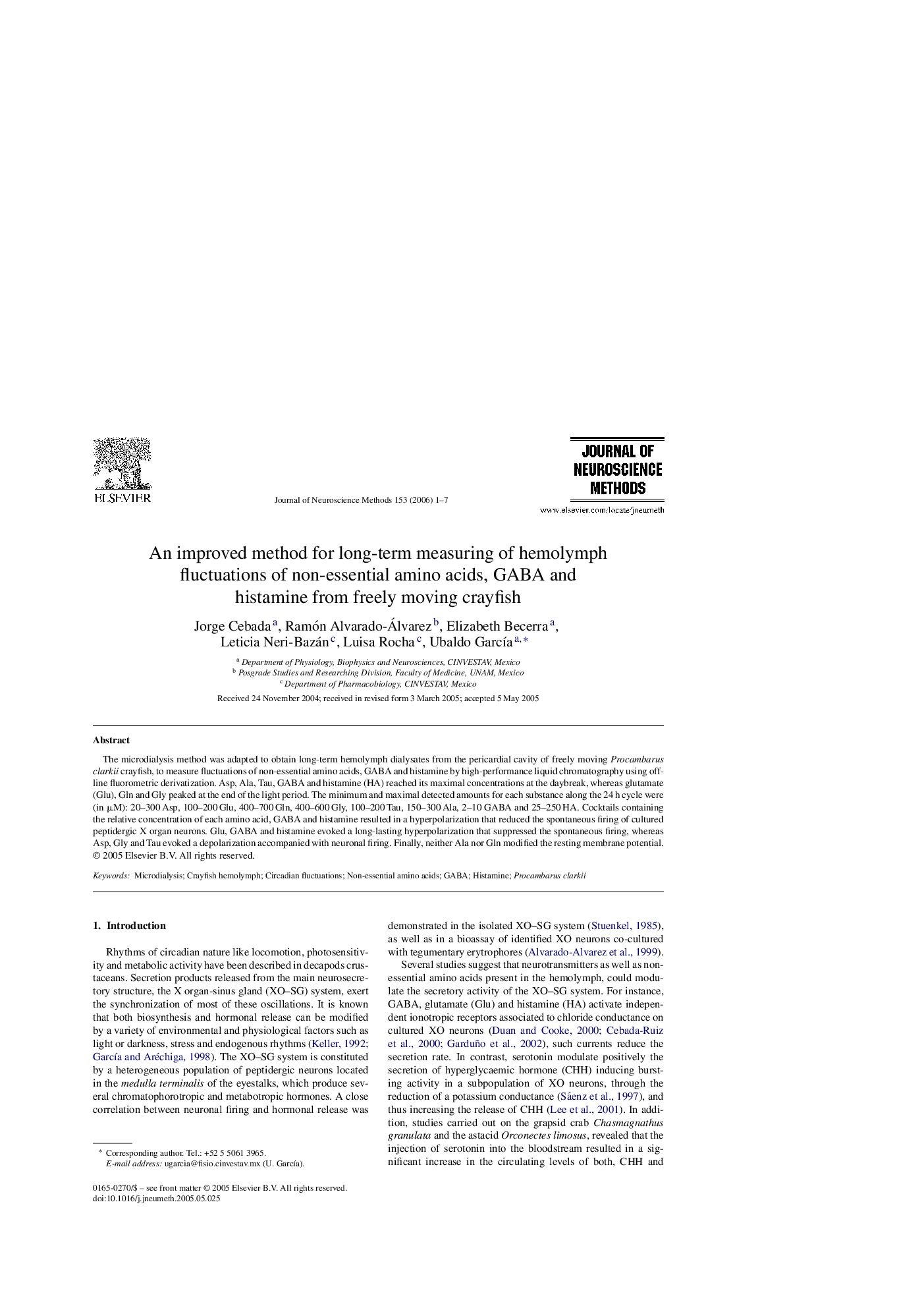| Article ID | Journal | Published Year | Pages | File Type |
|---|---|---|---|---|
| 4337157 | Journal of Neuroscience Methods | 2006 | 7 Pages |
Abstract
The microdialysis method was adapted to obtain long-term hemolymph dialysates from the pericardial cavity of freely moving Procambarus clarkii crayfish, to measure fluctuations of non-essential amino acids, GABA and histamine by high-performance liquid chromatography using off-line fluorometric derivatization. Asp, Ala, Tau, GABA and histamine (HA) reached its maximal concentrations at the daybreak, whereas glutamate (Glu), Gln and Gly peaked at the end of the light period. The minimum and maximal detected amounts for each substance along the 24 h cycle were (in μM): 20-300 Asp, 100-200 Glu, 400-700 Gln, 400-600 Gly, 100-200 Tau, 150-300 Ala, 2-10 GABA and 25-250 HA. Cocktails containing the relative concentration of each amino acid, GABA and histamine resulted in a hyperpolarization that reduced the spontaneous firing of cultured peptidergic X organ neurons. Glu, GABA and histamine evoked a long-lasting hyperpolarization that suppressed the spontaneous firing, whereas Asp, Gly and Tau evoked a depolarization accompanied with neuronal firing. Finally, neither Ala nor Gln modified the resting membrane potential.
Related Topics
Life Sciences
Neuroscience
Neuroscience (General)
Authors
Jorge Cebada, Ramón Alvarado-Álvarez, Elizabeth Becerra, Leticia Neri-Bazán, Luisa Rocha, Ubaldo GarcÃa,
